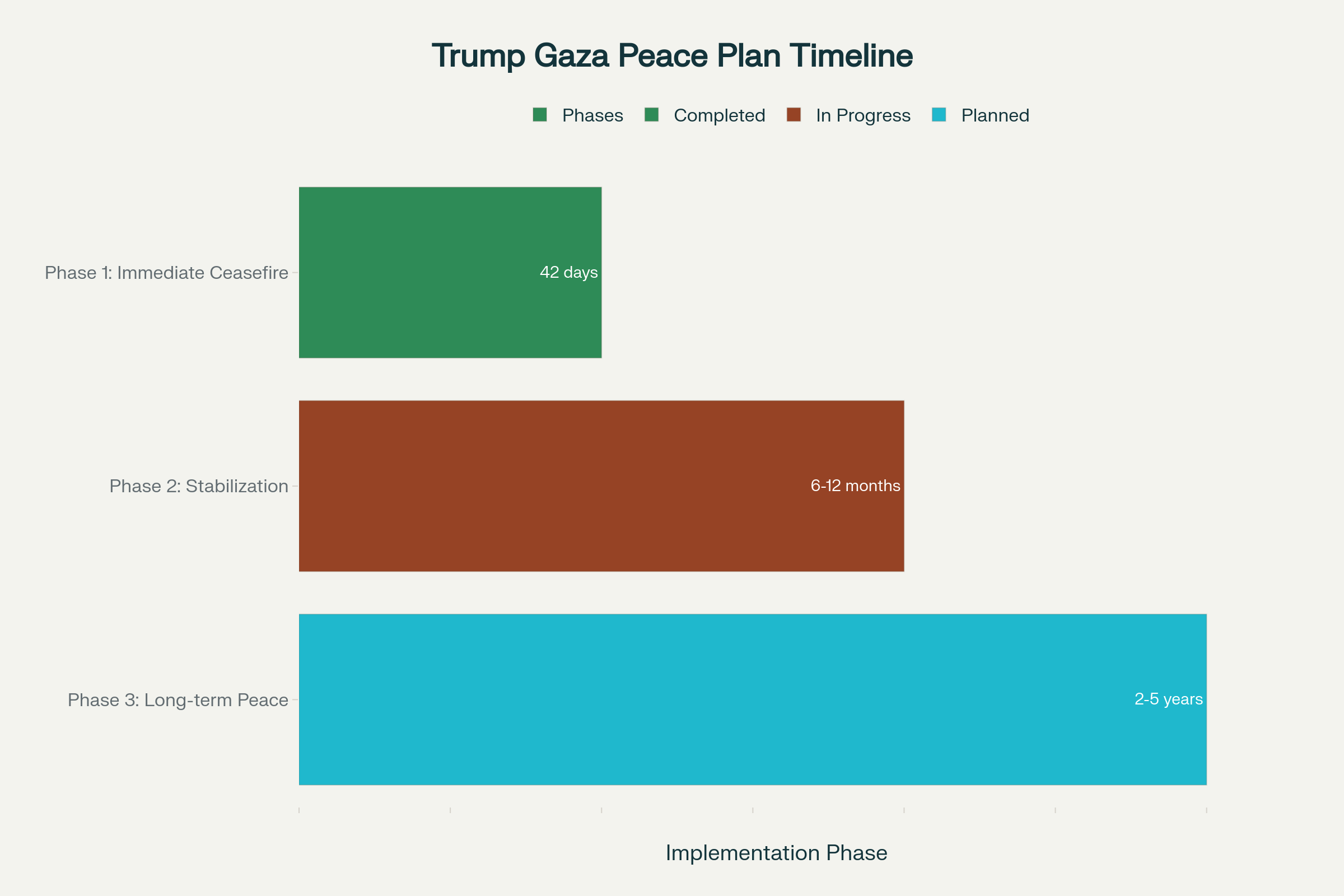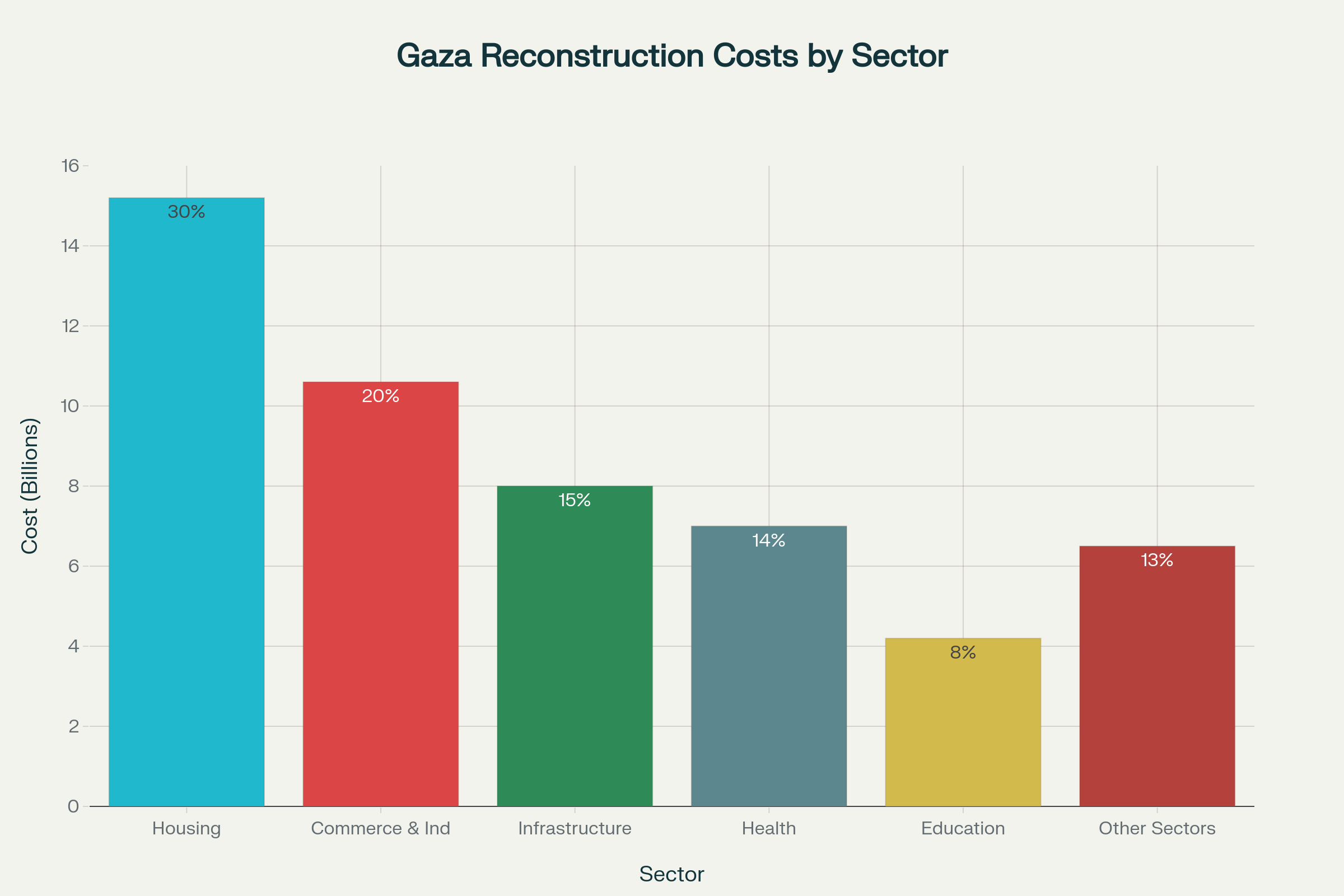Key Highlights:
- Egyptian President El-Sissi declares Trump Gaza peace plan represents the “last chance” for sustainable Middle East peace
- 20-point Trump Gaza peace plan establishes comprehensive framework for ceasefire, reconstruction, and Palestinian governance
- International summit in Sharm el-Sheikh mobilizes 27 world leaders behind Trump Gaza peace plan implementation
Egyptian President Abdel Fattah El-Sissi delivered a critical assessment at Monday’s international peace summit, characterizing the Trump Gaza peace plan as the region’s “last chance” for achieving lasting stability. The historic gathering in Sharm el-Sheikh brought together over 27 world leaders to formalize support for the Trump Gaza peace plan that successfully ended the devastating Israel-Hamas conflict. This comprehensive 20-point Trump Gaza peace plan represents a pivotal diplomatic breakthrough, offering structured pathways toward Palestinian self-determination while addressing Israeli security concerns through internationally supervised transition mechanisms.
MoS @KVSinghMPGonda, as special representative of PM @narendramodi, attended the Gaza Peace Summit at Sharm el-Sheikh co-hosted by Presidents @realDonaldTrump and @AlsisiOfficial.
— Randhir Jaiswal (@MEAIndia) October 13, 2025
India welcomes the signing of the landmark Peace Agreement and hopes that this will lead to lasting… pic.twitter.com/fjDryavDRZ
Trump Gaza Peace Plan Framework Establishes Historic Diplomatic Structure
The Trump Gaza peace plan creates an unprecedented three-phase implementation process designed to transform Gaza from conflict zone to stable territory. Phase one of the Trump Gaza peace plan successfully achieved immediate ceasefire, hostage releases, and Israeli military withdrawal to pre-agreed positions within 72 hours of cabinet approval. The Trump Gaza peace plan’s second phase focuses on Hamas disarmament, establishment of international stabilization forces, and deployment of Palestinian technocratic governance under the supervision of Trump’s “Board of Peace”.

Timeline of Trump Gaza Peace Plan implementation phases showing current progress and future milestones
| Phase | Duration | Key Actions | International Oversight | Status |
|---|---|---|---|---|
| Phase 1: Immediate Ceasefire | 42 days | Hostage release, prisoner exchange, Israeli withdrawal to pre-agreed positions | Egypt, Qatar, Turkey mediation | Completed October 2025 |
| Phase 2: Stabilization | 6-12 months | Hamas disarmament, international forces deployment, technocratic governance | UN peacekeeping forces, Board of Peace supervision | In Progress |
| Phase 3: Long-term Peace | 2-5 years | Palestinian Authority reforms, economic development, potential statehood discussion | Regional stability mechanisms, bilateral negotiations | Planned |
International mediation through the Trump Gaza peace plan involves Egypt, Qatar, Turkey, and the United States working collectively to ensure sustainable implementation of ceasefire terms. The Trump Gaza peace plan explicitly prohibits forced Palestinian displacement from Gaza while requiring Israel to refrain from territorial annexation, addressing core Palestinian concerns about demographic manipulation. Tony Blair has been appointed to Trump’s Board of Peace, providing experienced international oversight for the Trump Gaza peace plan’s governance transition mechanisms.
Comprehensive Reconstruction Strategy Within Trump Gaza Peace Plan
The Trump Gaza peace plan addresses massive reconstruction challenges through coordinated international investment totaling $53 billion over the next decade. Housing sector restoration represents the largest component of the Trump Gaza peace plan’s reconstruction framework, requiring $15.2 billion to rebuild destroyed residential infrastructure. The Trump Gaza peace plan establishes International Stabilization Forces to provide security during reconstruction while training vetted Palestinian police forces for long-term governance responsibilities.

Gaza reconstruction costs by sector based on World Bank estimates, showing housing as the largest requirement at $15.2 billion
Critical infrastructure rehabilitation under the Trump Gaza peace plan includes $8 billion for transportation networks, utilities, and communication systems essential for economic recovery. The Trump’s Gaza peace plan’s reconstruction phase prioritizes debris removal operations handling between 41 to 47 million tons of rubble through specialized international coordination. Egypt has committed to hosting a reconstruction conference in November 2025 to mobilize international funding for the Trump Gaza peace plan’s ambitious rebuilding objectives.
International Support Consolidates Behind Trump Gaza Peace Plan
The Sharm el-Sheikh summit demonstrated remarkable international consensus supporting the Trump Gaza peace plan’s implementation across multiple diplomatic levels. World leaders including Turkish President Erdogan, British Prime Minister Starmer, French President Macron, and German Chancellor Merz endorsed the Trump’s Gaza peace plan as a foundation for regional transformation. The Trump’s Gaza peace plan received formal endorsement through the “Trump Declaration for Enduring Peace and Prosperity” signed by mediating nations Egypt, Qatar, and Turkey.
Palestinian President Mahmoud Abbas attended the summit despite initial exclusion from the Trump Gaza peace plan’s governance framework, signaling Palestinian Authority willingness to engage with reconstruction processes. The Trump’s Gaza peace plan’s international support extends beyond immediate ceasefire monitoring to include long-term commitments for economic development and political stabilization. However, Israeli Prime Minister Netanyahu’s absence from the summit highlighted ongoing tensions regarding the Trump’s Gaza peace plan’s ultimate political objectives.
Two-State Solution Prospects Under Trump Gaza Peace Plan
El-Sissi’s advocacy for Palestinian statehood has positioned the two-state solution as a central outcome of successful Trump’s Gaza peace plan implementation. The Trump’s Gaza peace plan’s Point 19 establishes conditional pathways toward “Palestinian self-determination and statehood” contingent upon Palestinian Authority reforms and successful Gaza rehabilitation. This represents significant evolution in Trump’s Middle East policy, moving from previous positions that appeared to undermine two-state negotiations toward structured diplomatic frameworks.
The Trump’s Gaza peace plan faces fundamental challenges regarding Israeli acceptance of Palestinian statehood, with Netanyahu continuing to oppose Palestinian independence despite endorsing ceasefire terms. Currently, 193 UN member states recognize Palestinian statehood while the United States maintains non-recognition policies that Trump has justified by arguing recognition would “reward” militant activities. The diplomatic tension between El-Sissi’s statehood advocacy and Trump’s measured responses regarding the Trump’s Gaza peace plan’s political endgame highlights persistent disagreements among key stakeholders.
Concluding Assessment
The Trump’s Gaza peace plan represents a crucial diplomatic watershed that could establish lasting Middle Eastern stability or collapse under implementation pressures from competing interests. The unprecedented international coordination demonstrated at Sharm el-Sheikh provides essential momentum for the Trump’s Gaza peace plan’s sustainability, while massive reconstruction requirements offer opportunities for regional economic integration.
However, fundamental disagreements regarding Palestinian statehood, Israeli security arrangements, and Hamas disarmament create significant challenges that will test the Trump’s Gaza peace plan’s resilience in coming months. El-Sissi’s characterization of the Trump’s Gaza peace plan as the region’s “last chance” for peace carries profound implications, suggesting that failure could precipitate more devastating conflicts while success might finally resolve one of history’s most persistent diplomatic challenges.


